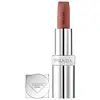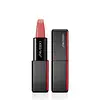What's inside
What's inside
 Key Ingredients
Key Ingredients

 Benefits
Benefits

 Concerns
Concerns

 Ingredients Side-by-side
Ingredients Side-by-side

Dimethicone
EmollientBis-Diglyceryl Polyacyladipate-2
EmollientHydrogenated Polyisobutene
EmollientTridecyl Trimellitate
EmollientIsohexadecane
EmollientTrimethylsiloxyphenyl Dimethicone
Silica
AbrasiveHydrogenated Jojoba Oil
AbrasiveIsostearyl Isostearate
EmollientDimethicone Crosspolymer
Emulsion StabilisingParaffin
PerfumingMica
Cosmetic ColorantKaolin
AbrasiveCera Microcristallina
Emulsion StabilisingCI 77891
Cosmetic ColorantDisteardimonium Hectorite
StabilisingPolyethylene
AbrasiveCI 77492
Cosmetic ColorantSynthetic Wax
AbrasiveCI 77491
Cosmetic ColorantCI 77499
Cosmetic ColorantAlumina
AbrasiveCI 15850
Cosmetic ColorantPentaerythrityl Tetra-Di-T-Butyl Hydroxyhydrocinnamate
AntioxidantTriethoxysilylethyl Polydimethylsiloxyethyl Dimethicone
Skin ConditioningIsopropyl Titanium Triisostearate
EmollientBifida Ferment Lysate
Skin ConditioningLimonene
PerfumingAlpha-Isomethyl Ionone
PerfumingGeraniol
PerfumingLinalool
PerfumingCitronellol
PerfumingSodium Benzoate
MaskingTocopherol
AntioxidantAcetic Acid
BufferingLactic Acid
BufferingParfum
MaskingDimethicone, Bis-Diglyceryl Polyacyladipate-2, Hydrogenated Polyisobutene, Tridecyl Trimellitate, Isohexadecane, Trimethylsiloxyphenyl Dimethicone, Silica, Hydrogenated Jojoba Oil, Isostearyl Isostearate, Dimethicone Crosspolymer, Paraffin, Mica, Kaolin, Cera Microcristallina, CI 77891, Disteardimonium Hectorite, Polyethylene, CI 77492, Synthetic Wax, CI 77491, CI 77499, Alumina, CI 15850, Pentaerythrityl Tetra-Di-T-Butyl Hydroxyhydrocinnamate, Triethoxysilylethyl Polydimethylsiloxyethyl Dimethicone, Isopropyl Titanium Triisostearate, Bifida Ferment Lysate, Limonene, Alpha-Isomethyl Ionone, Geraniol, Linalool, Citronellol, Sodium Benzoate, Tocopherol, Acetic Acid, Lactic Acid, Parfum
Mica
Cosmetic ColorantDimethicone
EmollientNeopentyl Glycol Dicaprate
EmollientPolyethylene
AbrasiveDiisostearyl Malate
EmollientSynthetic Fluorphlogopite
Titanium Dioxide
Cosmetic ColorantGlyceryl Diisostearate
EmollientCI 15850
Cosmetic ColorantMicrocrystalline Wax
Emulsion StabilisingTriisostearin
Skin ConditioningCI 77491
Cosmetic ColorantTrimethylolpropane Triethylhexanoate
EmollientCI 77492
Cosmetic ColorantCI 77499
Cosmetic ColorantMethicone
EmollientAluminum Hydroxide
EmollientTetradecene
EmollientSilica
AbrasivePolysilicone-2
Tocopherol
AntioxidantCalcium Stearate
Cosmetic ColorantSimethicone
EmollientBHT
AntioxidantCI 19140
Cosmetic ColorantCI 15985
Cosmetic ColorantCI 42090
Cosmetic ColorantMica, Dimethicone, Neopentyl Glycol Dicaprate, Polyethylene, Diisostearyl Malate, Synthetic Fluorphlogopite, Titanium Dioxide, Glyceryl Diisostearate, CI 15850, Microcrystalline Wax, Triisostearin, CI 77491, Trimethylolpropane Triethylhexanoate, CI 77492, CI 77499, Methicone, Aluminum Hydroxide, Tetradecene, Silica, Polysilicone-2, Tocopherol, Calcium Stearate, Simethicone, BHT, CI 19140, CI 15985, CI 42090
Ingredients Explained
These ingredients are found in both products.
Ingredients higher up in an ingredient list are typically present in a larger amount.
Ci 15850 is the pigment color red. It is an azo dye and created synthetically.
Azo dyes need to be thoroughly purified before use. This allows them to be more stable and longer-lasting.
This ingredient is common in foundations, lipsticks, and blushes. This color is described as brown/orangey red.
It has many secondary names such as Red 6 and Red 7. According to a manufacturer, Red 6 usually contains aluminum.
Learn more about CI 15850Ci 77491 is also hydrated iron III oxide. It's sole purpose is to give a red/pink hue to products.
Iron III oxides are classified as inorganic chemicals for coloring.
Synthetically created Ci 77491 is considered safer than those naturally found. This is because the synthetically created version may contain less impurities. Iron oxides are generally non-toxic and non-allergenic.
Learn more about CI 77491Ci 77492 is also hydrated iron III oxide. It's sole purpose is to give a yellow hue to products.
Iron III oxides are classified as inorganic chemicals for coloring.
Synthetically created Ci 77492 is considered safer than those naturally found. This is because the synthetically created version may contain less impurities. Iron oxides are generally non-toxic and non-allergenic.
Learn more about CI 77492Ci 77499 is also hydrated iron III oxide. It is created from mixing red and black iron oxides. This helps give shades of darkness to a product.
Iron III oxides are classified as inorganic chemicals for coloring.
Dimethicone is a type of synthetic silicone created from natural materials such as quartz.
What it does:
Dimethicone comes in different viscosities:
Depending on the viscosity, dimethicone has different properties.
Ingredients lists don't always show which type is used, so we recommend reaching out to the brand if you have questions about the viscosity.
This ingredient is unlikely to cause irritation because it does not get absorbed into skin. However, people with silicone allergies should be careful about using this ingredient.
Note: Dimethicone may contribute to pilling. This is because it is not oil or water soluble, so pilling may occur when layered with products. When mixed with heavy oils in a formula, the outcome is also quite greasy.
Learn more about DimethiconeMica is a naturally occurring mineral used to add shimmer and color in cosmetics. It can also help improve the texture of a product or give it an opaque, white/silver color.
Serecite is the name for very fine but ragged grains of mica.
This ingredient is often coated with metal oxides like titanium dioxide. Trace amounts of heavy metals may be found in mica, but these metals are not harmful in our personal products.
Mica has been used since prehistoric times throughout the world. Ancient Egyptian, Indian, Greek, Roman, Aztec, and Chinese civilizations have used mica.
Learn more about MicaPolyethylene is a synthetic ingredient that helps the skin retain moisture. It is a polymer.
It is also typically used within product formulations to help bind solid ingredients together and thicken oil-based ingredients. When added to balms and emulsions, it helps increase the melting point temperature.
Silica, also known as silicon dioxide, is a naturally occurring mineral. It is used as a fine, spherical, and porous powder in cosmetics.
Though it has exfoliant properties, the function of silica varies depending on the product.
The unique structure of silica enhances the spreadability and adds smoothness, making it a great texture enhancer.
It is also used as an active carrier, emulsifier, and mattifier due to its ability to absorb excess oil.
In some products, tiny microneedles called spicules are made from silica or hydrolyzed sponge. When you rub them in, they lightly polish away dead skin layers and enhance the penetration of active ingredients.
Learn more about SilicaTocopherol (also known as Vitamin E) is a common antioxidant used to help protect the skin from free-radicals and strengthen the skin barrier. It's also fat soluble - this means our skin is great at absorbing it.
Vitamin E also helps keep your natural skin lipids healthy. Your lipid skin barrier naturally consists of lipids, ceramides, and fatty acids. Vitamin E offers extra protection for your skin’s lipid barrier, keeping your skin healthy and nourished.
Another benefit is a bit of UV protection. Vitamin E helps reduce the damage caused by UVB rays. (It should not replace your sunscreen). Combining it with Vitamin C can decrease sunburned cells and hyperpigmentation after UV exposure.
You might have noticed Vitamin E + C often paired together. This is because it is great at stabilizing Vitamin C. Using the two together helps increase the effectiveness of both ingredients.
There are often claims that Vitamin E can reduce/prevent scarring, but these claims haven't been confirmed by scientific research.
Learn more about Tocopherol